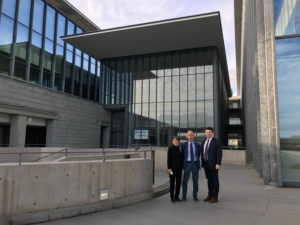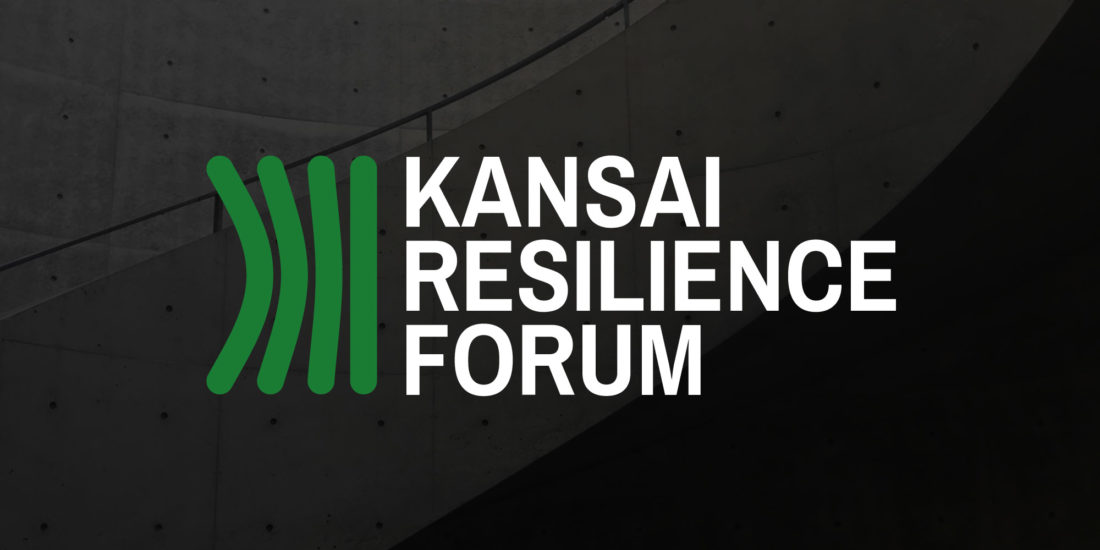
Professor Haruko Satoh (left) and Dr Joseph Haldane (right) with Dr Yutaka Mino, Director of the Hyogo Prefectural Museum of Art, stand in front of the new Tadao Ando designed gallery, which will host the Kansai Resilience Forum.
The event will be in Kobe on Friday, February 22, 2019 at the Hyogo Prefectural Museum of Art and is held in collaboration with both Osaka University through the IAFOR Research Centre at the Osaka School of International Public Policy (OSIPP), and Kobe University. The project will be headed by IAFOR Chairman and CEO, Dr Joseph Haldane, and Professor Haruko Satoh, of the OSIPP.
On Resilience: Managing Disasters
When struck with natural disasters, such as earthquakes and typhoons, the Japanese have been shown to have remarkable resilience. In the aftermath of typhoon Jebi in September that closed down Kansai International Airport due to extensive flooding and damage to the bridge connecting the airport to the mainland, the airport was fully operational and back to business as usual within weeks. Kansai area was a disaster zone that summer, still recovering from flooding and an earthquake from only a few months earlier, and yet the people were determined to carry on as usual. This ability to recover quickly from setbacks and crises may be called a trait — a thread that weaves through the narrative of Japan’s modern history. Recovering from the ashes of war devastation, three massive earthquakes that flattened Tokyo (1923), Kobe (1995) and the entire Pacific coastal regions of Tohoku (2011), not to mention many more earthquakes that hit other cities, such as Niigata, Kumamoto, and more recently Sapporo, the efforts to recover are very much part of coping with numerous personal tragedies. The Japanese outlook toward life and nature has perhaps been very much shaped by the natural environment of the archipelago.
In modern times, there are other crises and calamities that set all of us back, as part of the international system that connects countries, businesses and peoples. The world financial crises in the last two decades have plunged people’s lives into misery, wars and terrorism rob countless innocent lives; the distribution of wealth or basic human security is hardly fair and crises defy national borders and are infectious. While trying to remain open and connected, the compulsion to close up borders and control the flow of peoples, information and goods is also part of world politics today as protective measures. Japan is an example par excellence, a country that has arguably not fully opened itself to the world, be it access to markets or taking in immigrants and refugees, trying as it were to preserve and protect the homogenous society of order and harmony. However, Japan’s modern history is also a story of shifting and adjusting to the dramatically changing outside world, incrementally but nevertheless changing as a way of overcoming the challenges of modernity. It is not resistant to change, but perhaps resilient to the changes that come its way.
This “Resilience” forum is themed around the ways Japanese society as a whole demonstrates this capacity to overcome as a reflection of Japanese ways of doing things that may contribute to building resilience in other societies around the world.

